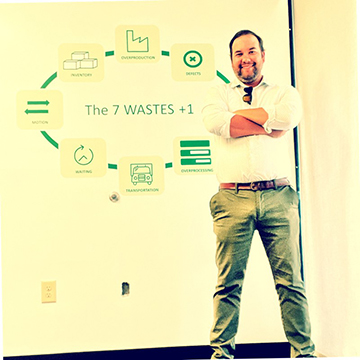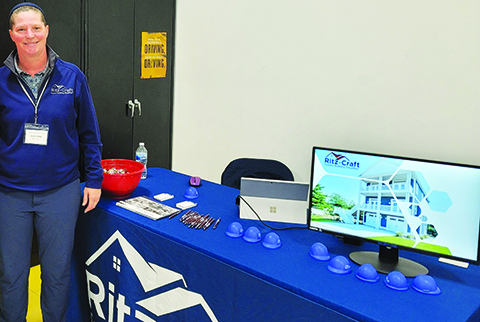Here’s how to attract, engage with and retain a younger workforce.
- Thanks largely to their immersion in social media, young people tend to expect more regular performance feedback than older workers. Employers who provide it will retain a higher percentage of them.
- The fact that this generation has grown up with technology means that they bring a new type of creativity to the job. They’re also more willing to speak up.
- Young people want to know there are growth opportunities. The employers who get the most from them are the ones who know how to instill a sense of purpose and who make ongoing training part of the company culture.
January 2023 saw the unemployment rate in the United States fall to 3.4%, its lowest level since the late 1960s. But while the number of job openings continues to outpace the number of unemployed, the labor participation rate remains just above its historical low. In addition, the current workforce is aging and many workers are retiring.
Everyone in the building industry is painfully aware of this problem, and everyone understands that skill at managing and retaining young employees will be critical to their future success. But many struggle with how to do it.

Photo credit: Dial Ventures, LLC
Communicate, or Else
As factories strive to staff up, and to mesh younger workers with senior-level employees, they will face new challenges. Like it or not, managers that want to get the most out of their employees will need to adapt.
For one thing, today’s young workers need to hear from their managers more often. “They tend to need more positive affirmation and follow-up on their role in the workplace,” says Meagan Carpenter-Dial, Co-Founder, with husband Clifton, of Dial Ventures, LLC, a North Carolina-based consultancy that services the construction industry in workforce and organizational development.
The Dials have worked with all levels of the offsite construction workforce, from design engineers to frontline workers. “Younger workers come from a culture where they post online and get immediate gratification from their posts, and they’re seeking this same instant feedback in the workplace,” according to Meagan
Contrast this with older generations, most of whom appreciate feedback but are not as reliant on it. According to Clifton, who worked for several years as the Training and Development Manager for Volumetric Building Companies (VBC), which specializes in modular multifamily buildings, older workers rarely complain and won’t leave a job even in less-than-ideal conditions. “The older generation takes pride in hard work, and while they might complain to each other, they keep their heads down and get the job done,” he says.
Retaining the younger generation, however, requires really good communication. “They appreciate feedback, even criticism, and seek organizational support in learning and growing in their workplace role,” according to Meagan.
In addition, many younger workers, particularly those without children to support, are more likely to leave if they aren’t happy with their job, according to Jacki Clark, a talent manager and safety director for modular home manufacturer Ritz-Craft. “Younger employees are living [with their own parents] longer than the previous generations and tend to be less accountable. If they’re not happy with the job, they simply don’t show up.” She adds that Ritz-Craft has a lower retention rate for younger workers.
The point is that managers need to work differently to get the most out of the typical young employee, and that it starts with recognizing the ways in which they differ.

Photo credit: Jackie Clark
Benefits of Young Employees
On the other hand, Meagan finds that the younger generation is more innovative and more willing to speak up and to suggest improvements. “They have more well-rounded ideas about work and have a more systematic thought process about it.” Most want to make the work better for everybody. She also says that it’s normal for older workers to think in black and white terms and fall back to “that’s how we have always done it,” while younger workers are open to change.
Jacki Clark attributes this generational difference to technology in general, and to video games and YouTube in particular. “[Young people] are more creative and see things differently and are up to date with current trends.”
The fact that they see things differently makes it unrealistic to expect new, younger employees to instantly fall in line.
Getting Them on Board
How does a company prepare itself to take advantage of this generation of workers?
To begin with, hiring processes need to change. For instance, Clifton believes that floor supervisors should be made an integral part of the hiring process. “Unlike HR, floor supervisors know the ins and outs of the job and can ask the right questions to determine who will be a good fit,” he says. “It’s not just about the resume.”
Then there’s the traditional onboarding. Companies that are production focused often rush this step and don’t take it as seriously as they should. Yet the fact is that a greater focus on onboarding and training can ultimately save the company time and money.
“Companies should take the attitude of ‘I’m going to onboard employees correctly, give them purpose and get them excited,’” says Meagan. “When you truly onboard young employees [you will find that] they commit and work hard for a company they believe in.”
Jacki Clark says that Ritz-Craft also changed the way they train people. They now apply more hands-on learning techniques rather than classroom and manual methods. “Older generations would take the manual, read it and understand it. The younger generation is more comfortable learning side-by-side with a veteran employee.” She says while learning styles vary with the individual, younger people in general retain the information better when learning by doing.
She also suggests starting simply and slowly, then gradually adding complexity. This means committing to lengthier training periods. The learning process should also continue on the factory floor.
Another way to get the most from younger people is to keep them informed of their progress. “[At VBC] we created skills matrices and posted them on the floor so employees would know the scale they were being rated on,” recalls Clifton. “It also provided a clear vision of what needed to be done to get to the next level of progress and acted as a visual management tool that provided clarity of required competencies and skill level.”

Photo credit: Dial Ventures, LLC
Working Side-by-Side
The typical manufacturing facility has been, and will continue to be, home to multiple generations. How can management get these different generations to work well together?
Clifton insists that it’s not a problem when everyone is working towards common goals. “When you have to work as a team, everyone blurs into one and no one is worried about what generation the person next to them is part of.” Meagan adds, “People gain a better understanding of their co-workers and realize where they are coming from.”
The offsite construction industry will only grow if it has sufficient staff that is well trained and well managed. Management that recognizes how to work with the different generations will have a more motivated and stable workforce.







